
There are five Imperial altars from the Ming and Qing Dynasties located around the Old Palace, or the Gugong. They are Tiantan - the Altar of Heaven, Ditan - the Altar for the Earth, Ritan - the Altar for the Sun, Yuetan - the Altar for the Moon and Xiannongtan - the Altar for Agriculture.
This is the grandest of the altars and the one we were to visit the first. Even if you have seen this before it is always something haunting with the feeling of walking on the same strip of marble slabs that during two dynasties were only allowed for the emperor. And also the eerie feeling about, what if this really works and you mess something up with the relations between heaven and earth?
Up early and off to The Altar of Heaven with Bo. We discuss the relationship of the blue color that runs like a ribbon along the temple's length axis. Blue sacrificial vessels, blue bricks and gilt forms together with the lush green cedar trees an intense triad. All blue bricks seems to have been replaced with new ones relatively recently.
Built in 1420, this was the place for emperors to offer sacrifices to heaven. It includes the Hall of Prayer for Good Harvest, Imperial Vault of Heaven and Circular Mound Altar.
We take a taxi from the west gate to the north. Lunch at Beijing Hotel, Bo's old favourite. He was there during the student uprising at Tiananmen Square, right outside of the Hotel in the spring of 1989.

Bo Gyllensvärd at The Altar of Heaven, Beijing 1992.
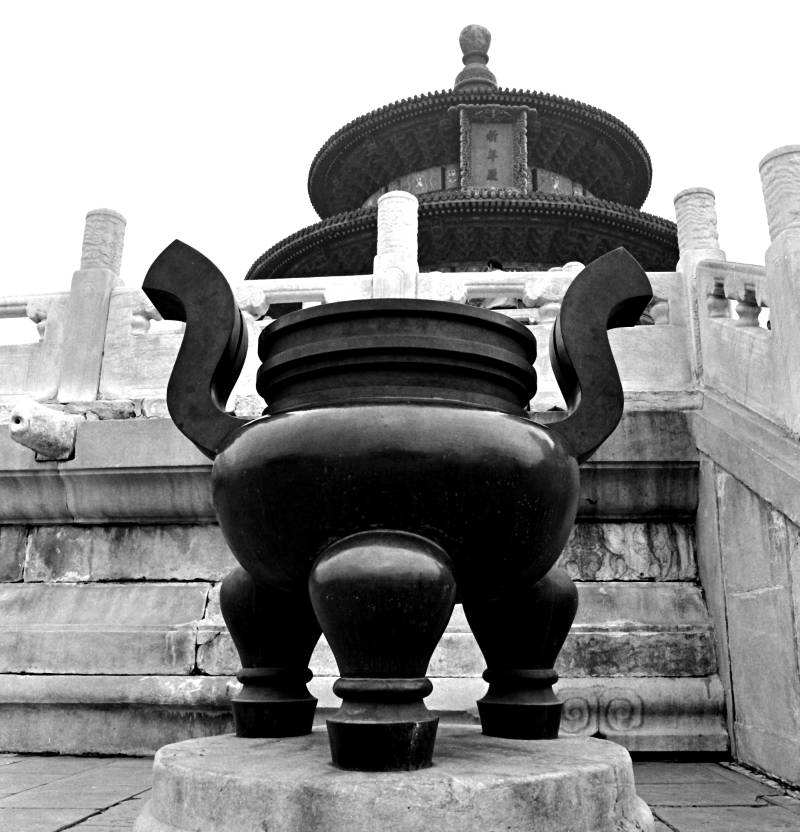
The day before the offerings the area was cleansed by burning if incense. Then these would have been the censer, wouldn't it.
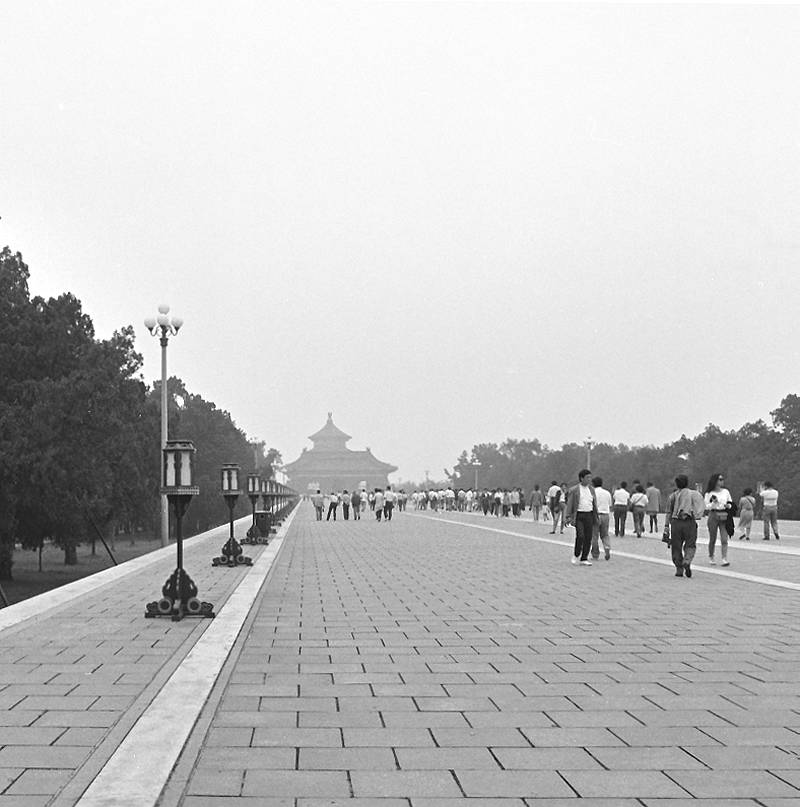
1. Hall of Prayer for Good Harvests in the far distance, behind a gate building.
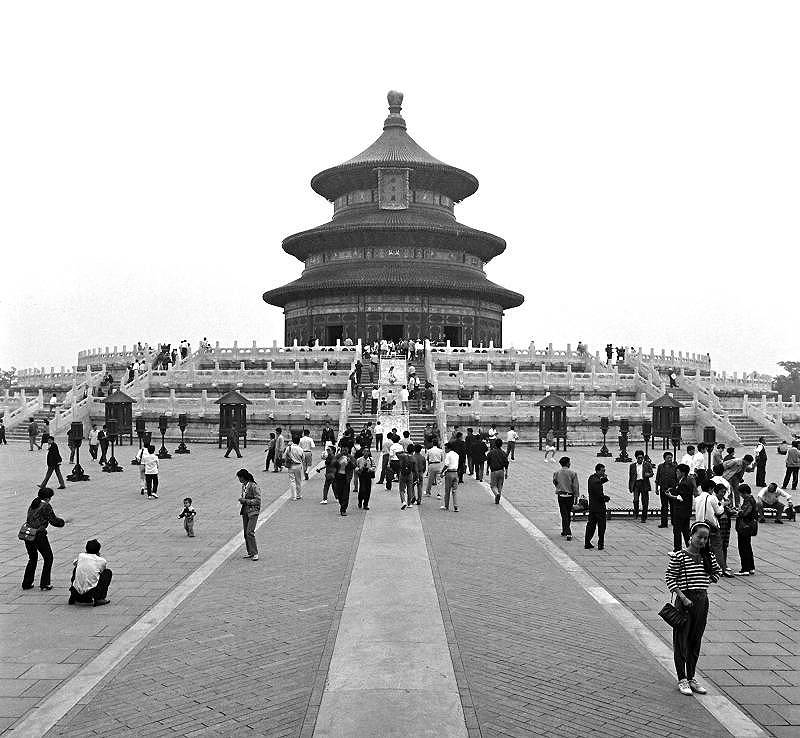
2. Hall of Prayer for Good Harvests
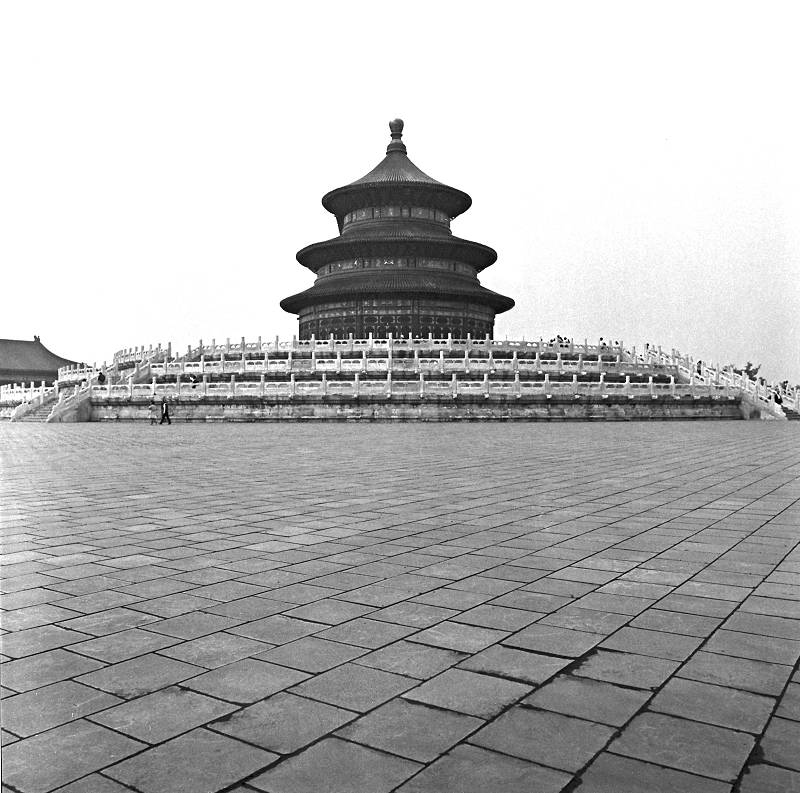
3. Hall of Prayer for Good Harvests. Coming from a western background one would expect all holy sacrificial places to be actual building however the actual Altar of Heaven proper is an elevated circular platform further north that is not very high at all, why its significance might escape the occasional visitors today.
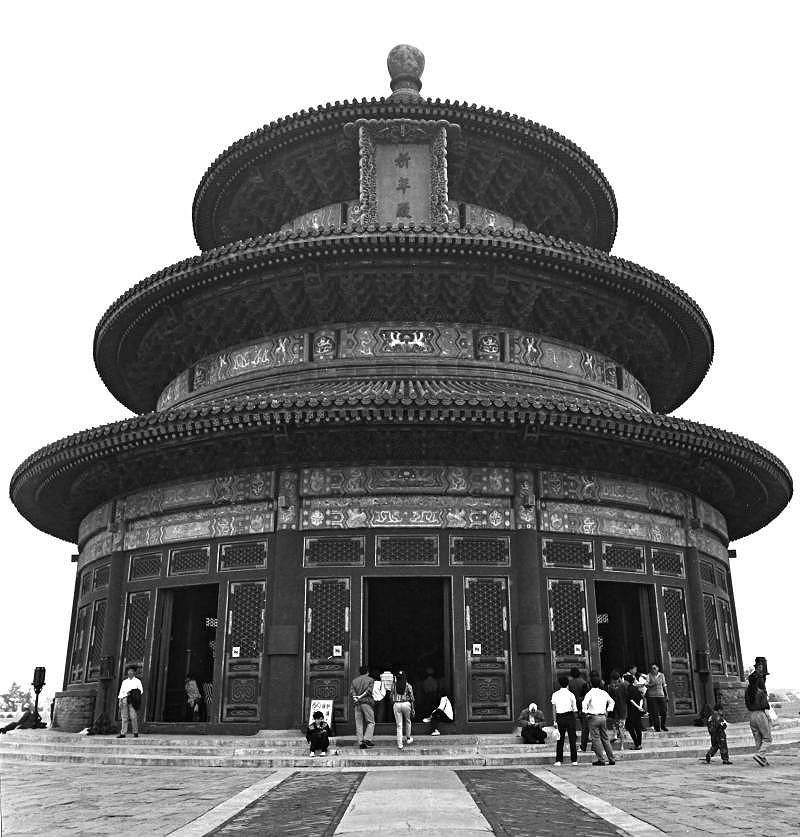
4. The Hall of Prayer for Good Harvests and the Circular Mound Altar was the place for emperors to offer sacrifices to heaven.
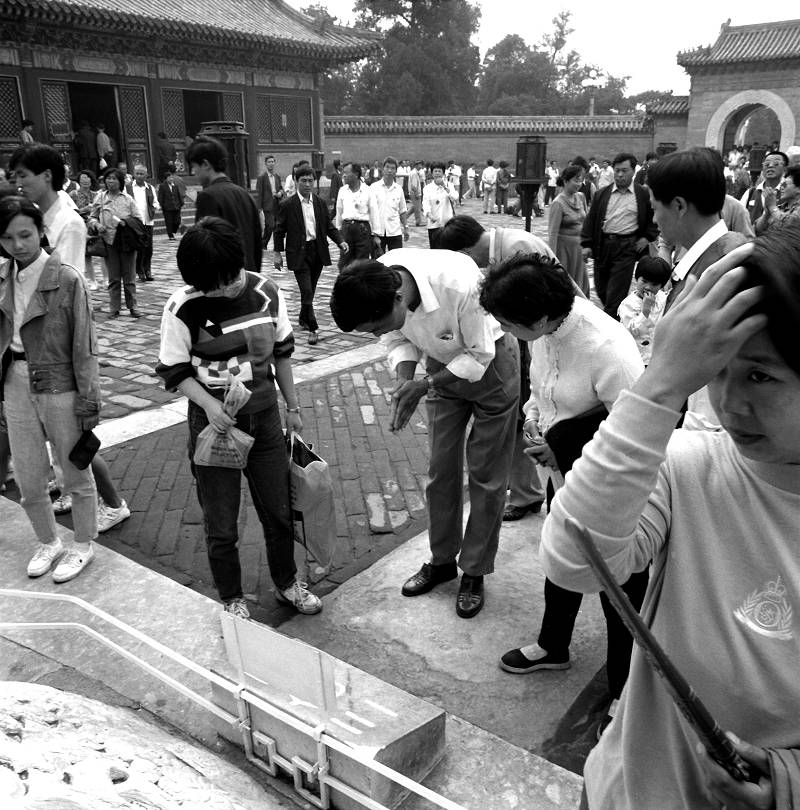
5. Imperial Vault of Heaven, Beijing 1992.
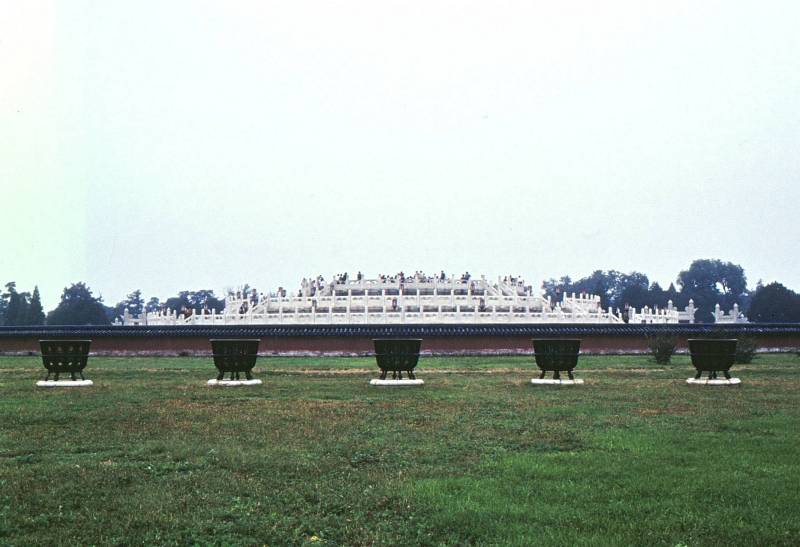
6. This is the Circular Mound Altar where the emperors offered sacrifices to heaven.
Cast iron sacrificial fire baskets.
On this picture it is possible to see the blue color of the tiles surrounding the altar
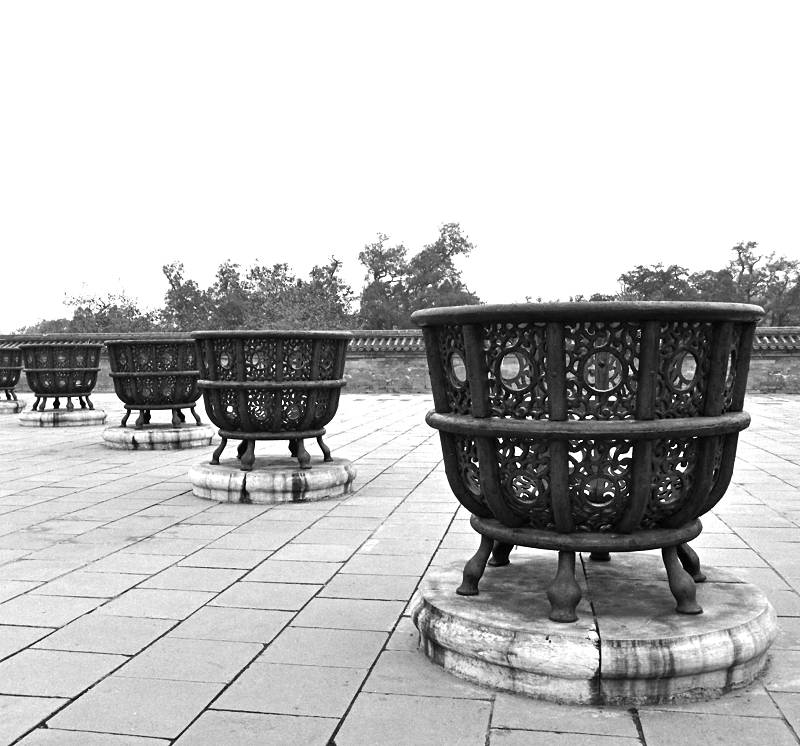
8. Baskets made of cast iron. Bo told these were for the burning of the silk offerings. This particular piece of information I have not heard anywhere else. Even the idea casts he a certain light on the affluence.
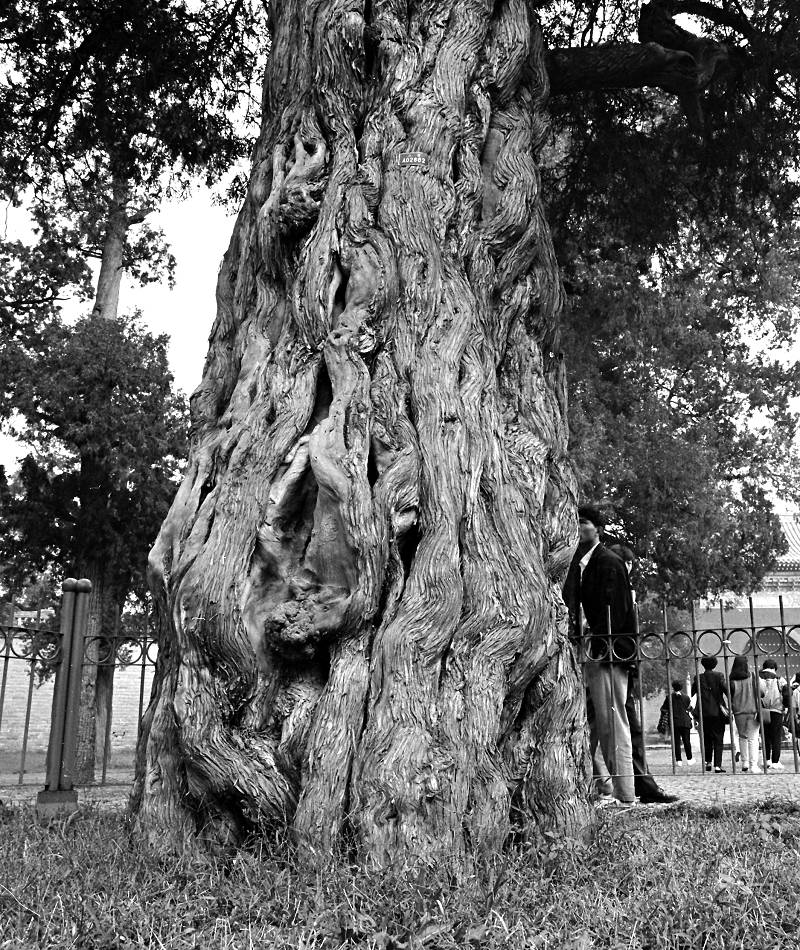
Just outside the echo wall at the Imperial Vault of Heaven, this old cypress is still standing after more than 500 years. It is called the Nine Dragon Cypress. The number nine is the number of the Emperor and is reflected in all aspects and details in the architecture of the altars. Pretty much everything is nines and dragons around here.
In the afternoon we went to the Ditan or the Altar of the Earth in the Ritan Park. It was strangely few people there considering the size of the city of Beijing. Ritan park is otherwise very popular in the morning and those who don't like to participate themselves often go there anyway for a morning stroll or to enjoy the calmness and watch people, many of them old and practicing Tai Chi, some even with real swords.
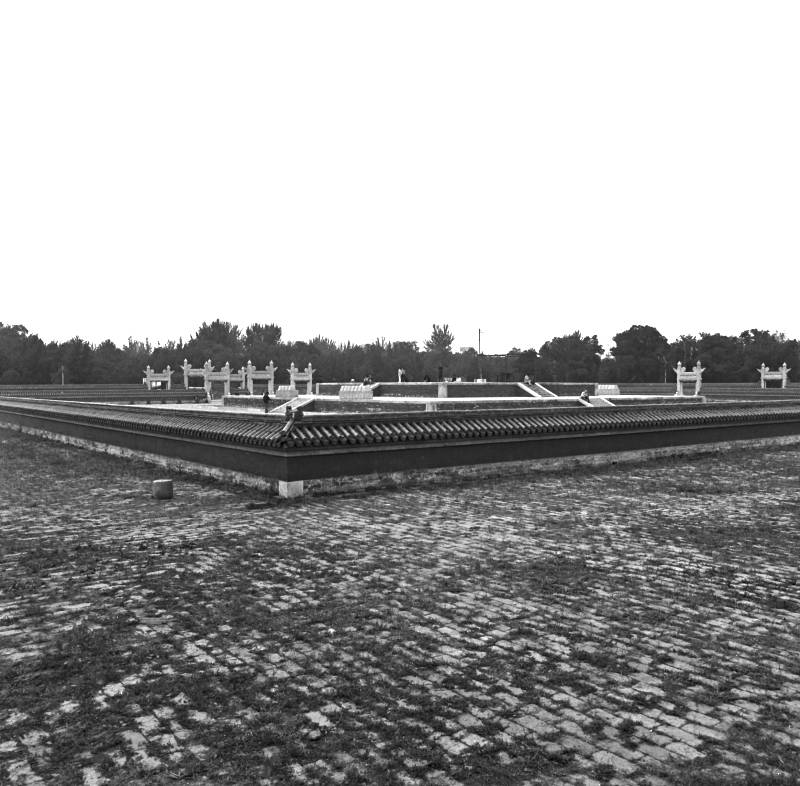
The Altar of Earth, surprisingly desolated.
Photo © Jan-Erik Nilsson, Beijing, 22 September 1992.
When walking up towards the altar area, Bo told this was built in 1530, during the Jiajing (1522-1566) period of the Ming dynasty, with soil and altars covered with glazed bricks of a powerful yellow shade. Here the emperors would celebrate the annual summer solstice with sacrifices to the earth.
It was restored in 1747 with a gray limestone flooring. It was a real loss that the Yellow bricks disappeared. In 1981 it was restored again, with gray cement slabs replacing even the limestone. In a building nearby were a few yellow floor bricks preserved and there were also an exhibition of ritual objects, and a video recorded reconstruction of how the sacrificial ceremony was performed.
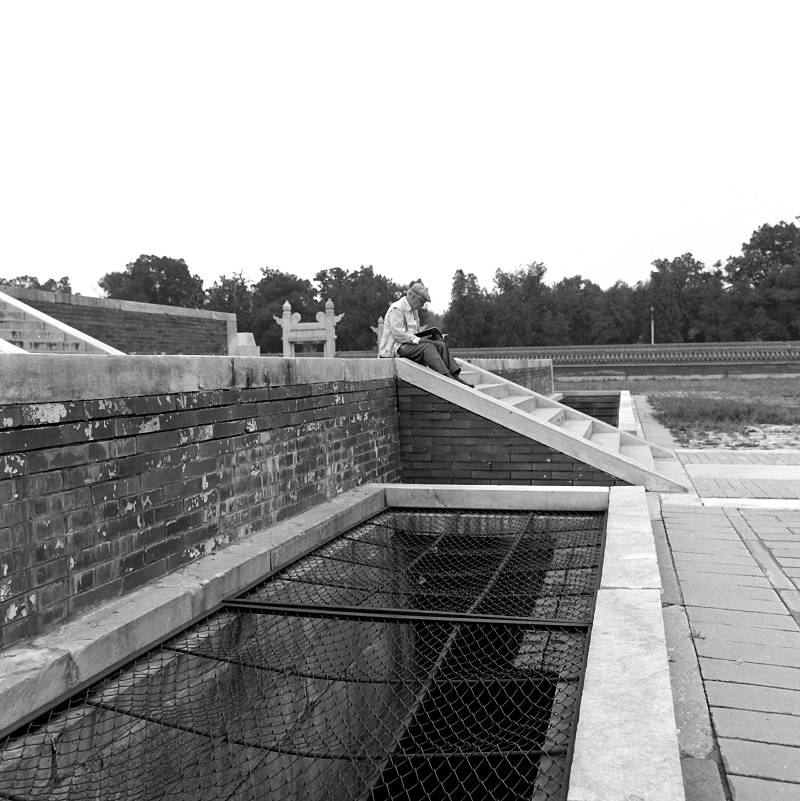
Bo Gyllensvärd sitting on the stairs leading up to Ditan, the Altar of Earth.
Photo © Jan-Erik Nilsson, Beijing, 22 September 1992.
Around the altar corners there was a moat filled with water, perhaps to illustrate the yang aspect of the earth. All these altars and even the lay out of the entire Forbidden City and its relation to the altars were very well thought out from Daoist aspects.
Next place Bo suggested that we should visit was the Lama Temple, the (Yonghe gong). In the car Bo the conversation went into some of the many knowledgeable Swedes who are active in Chinese art and culture in Sweden that he felt I should meet.
Yonghe gong is located immediately inside of Beijing's old city wall, north of the Forbidden City. Nowadays, it is inhabited by esoteric Tibetan Buddhists with the Dalai Lama as the head.
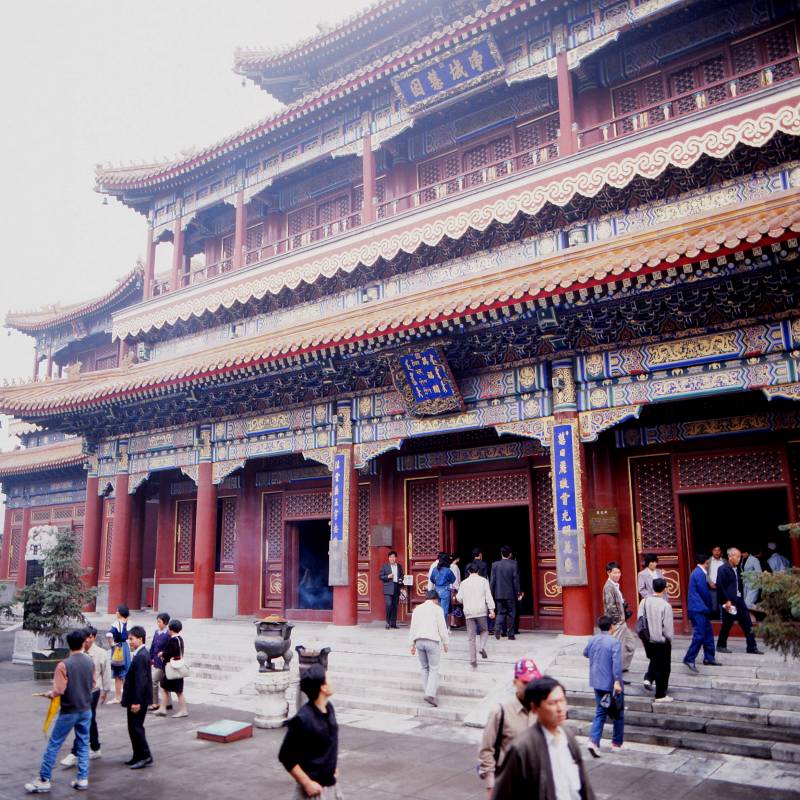
The temple is about 500 meters long and consist of five main halls separated by courtyards and all organized along a south to north axis. This building is the Hall of Heavenly Kings (Tianwangdian) which is the first and the main entrance, facing south.
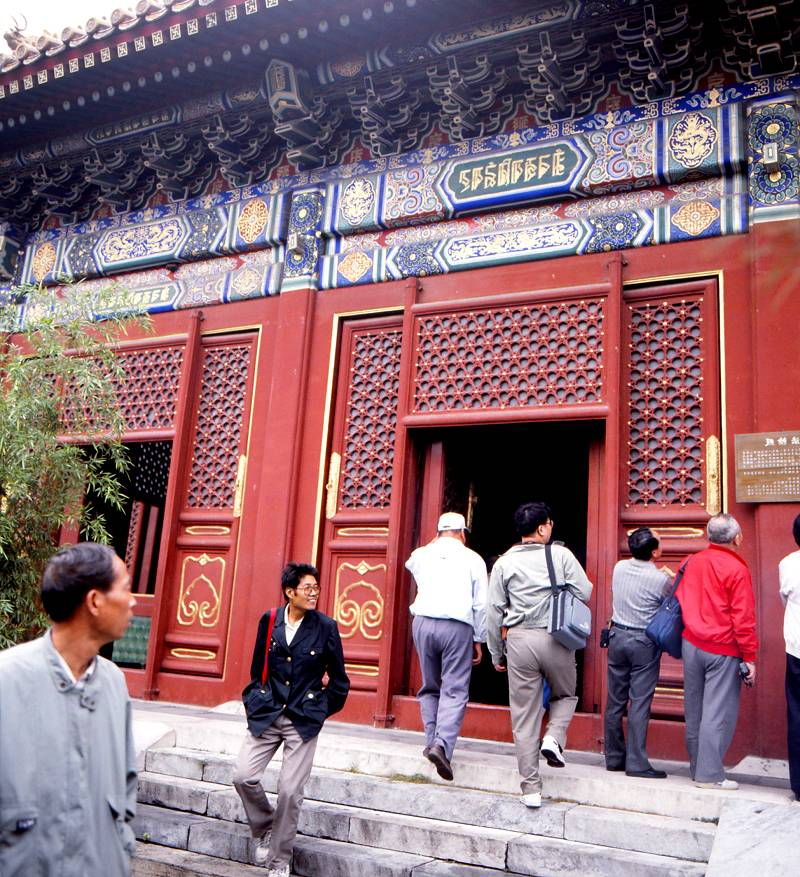
Yonghegong was originally built as the prince residence of the future Emperor Yongzheng (1723-1735) and was also the birthplace of the Emperor Qianlong (1736-1795). It escaped the cultural revolution thanks to the personal intervention by Premier Zhou Enlai, it is said. Nowadays, after 1981, the temple is open to the public and visited by both believers, tourists and others.
After the first entrance hall (Tianwangdian) comes the actual Hall of Harmony and Peace (Yonghegong), then the Hall of Everlasting Protection (Yongyoudian), the Hall of the Wheel of the Law (Falundian), and the Pavilion of Ten Thousand Happiness's (Wanfuge).
The third hall, the Yongyoudian or, Hall of Everlasting Protection was where the Yongzheng emperor actually lived when he was still a prince, and also where his coffin was placed after his death in 1735.
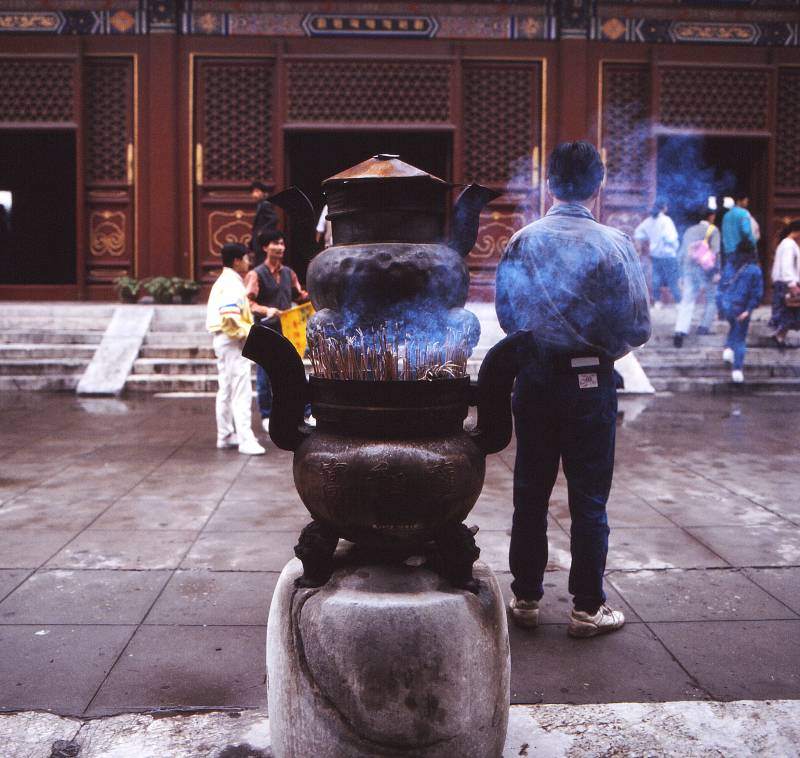
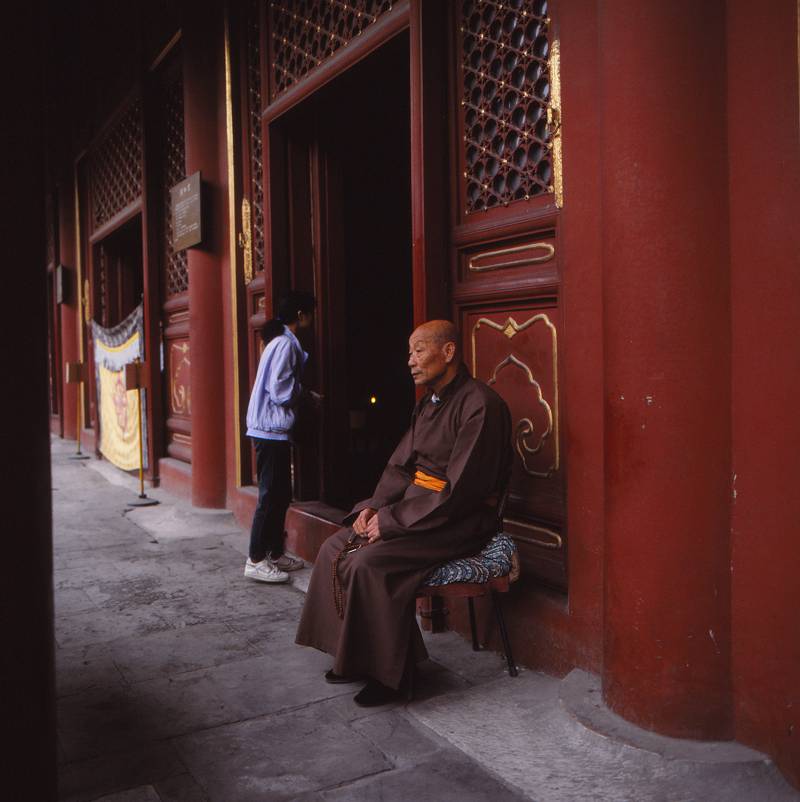
Nowadays Yonghegong it is inhabited by esoteric Tibetan Buddhists with the Dalai Lama as the head.
Photo © Jan-Erik Nilsson, Beijing, 23 September 1992.
The construction work actually started in 1694 under the Kangxi emperor to become an official residence for court eunuchs. However it was pretty much immediately turned over to the son of Kangxi, the future Yongzheng emperor - as his personal palace. So this is where Yongzheng grew up. He was really fond of the kind monks that he had gotten to know during this time, so when he became Emperor in 1722, he gave up half of the building as a lamasery, i.e. a monastery for Tibetan Buddhist monks, while keeping the other half for himself.
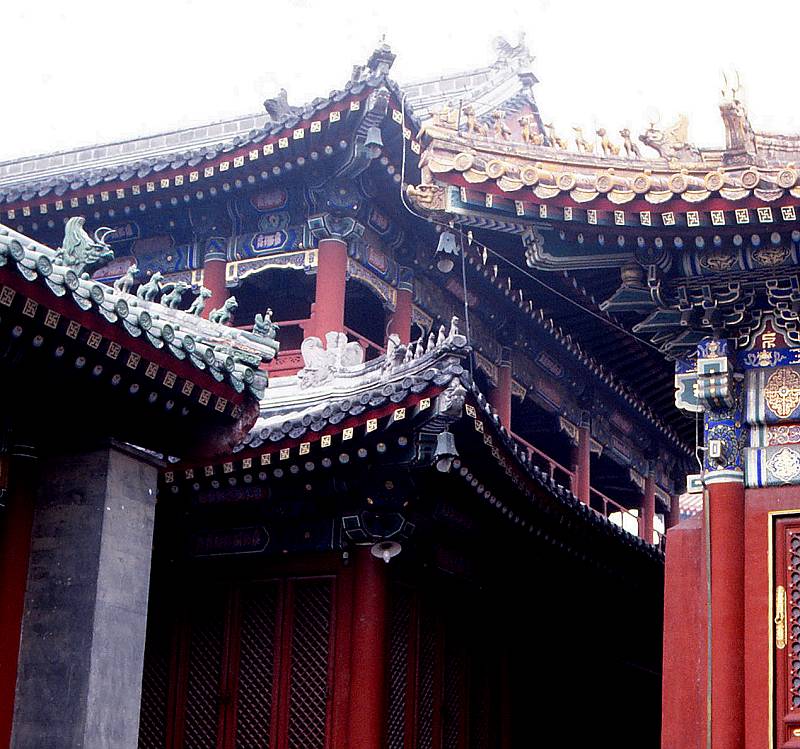
Yongzheng reign was however a short one and after his death in 1735, his coffin was placed here for mourners at which time the palace was given imperial status and had its turquoise roof tiles replaced with ones in Imperial yellow. Then, from 1744 and onwards the entire complex was then given up to the monks.
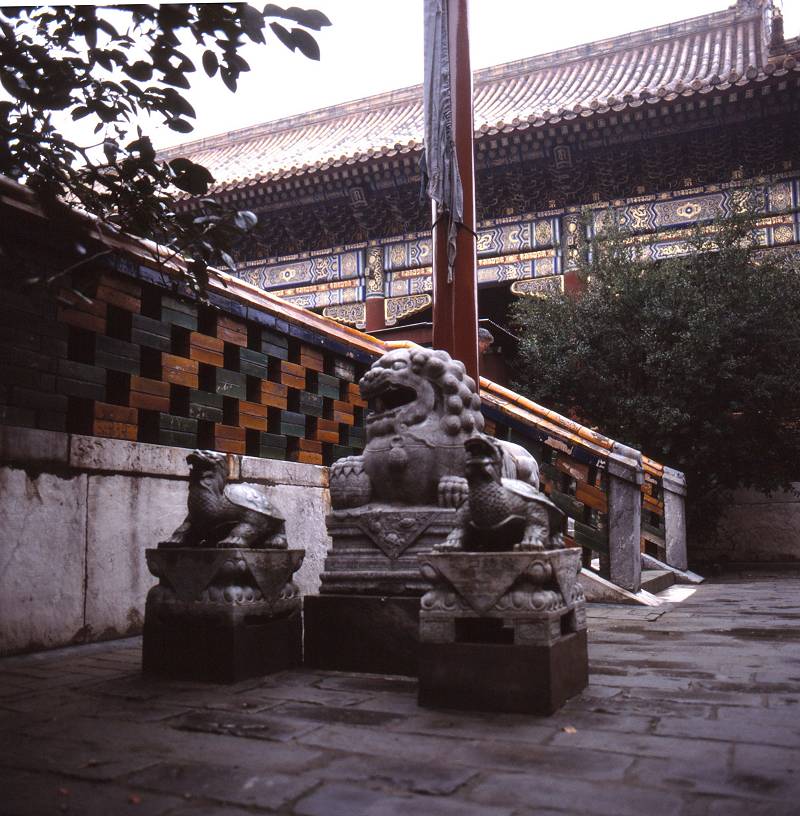
The Confucius Temple is just nearby and has an altogether different style and feel to it.
In the evening lunch at the SARA hotel with Bo, and Nils Olof Ericsson, cultural attaché and chief secretary at the Swedish Embassy .